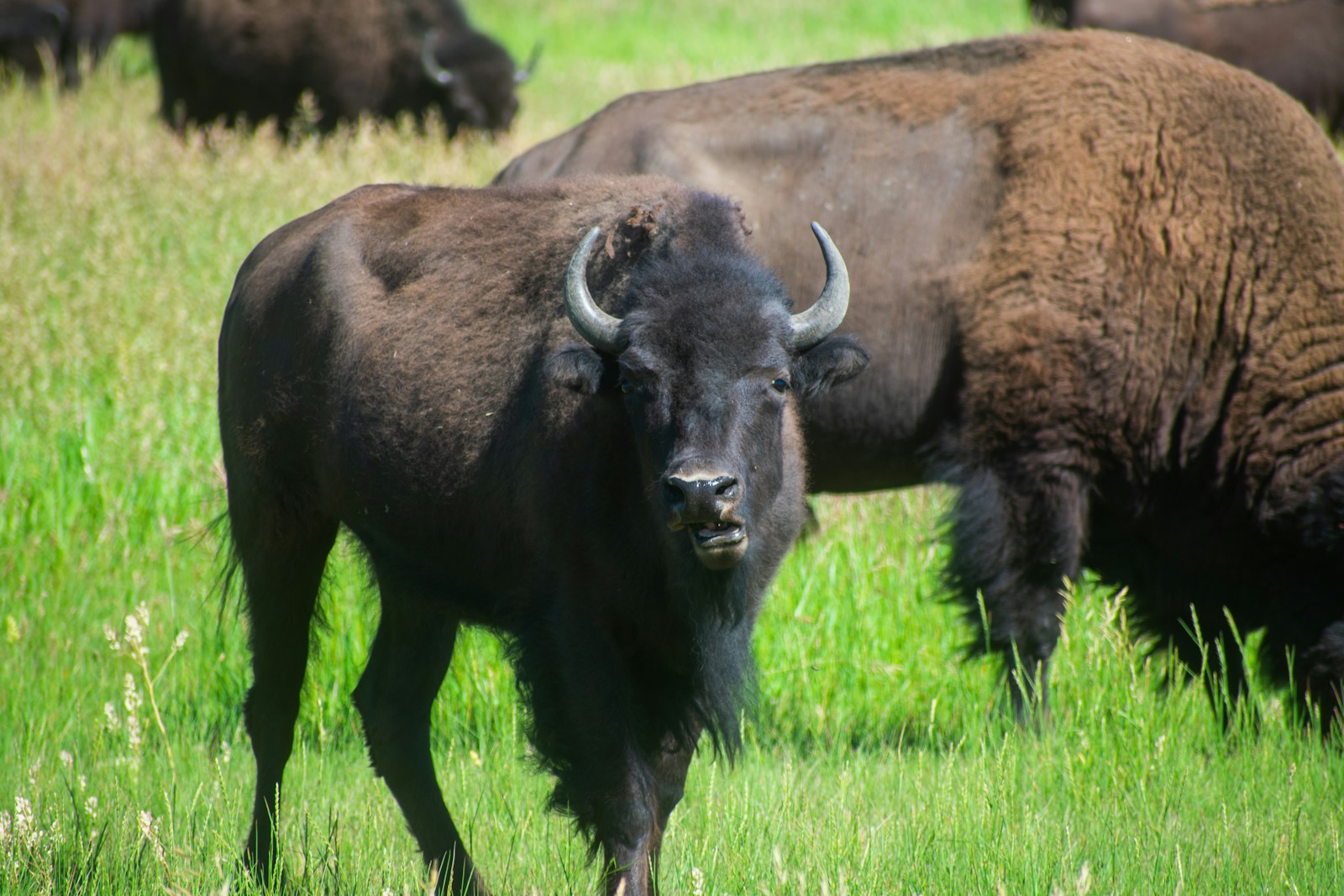The rhythmic thunder of hooves across open prairie represents one of North America’s most spectacular wildlife events – bison migration. Once numbering in the tens of millions, American bison created the continent’s most impressive wildlife spectacle as they traveled seasonally across the Great Plains. Today, while greatly reduced in numbers, several managed herds maintain this ancient tradition, offering wildlife enthusiasts exceptional opportunities to witness these magnificent creatures on the move. Seasonal migration patterns, typically driven by weather changes and food availability, create predictable viewing windows for travelers hoping to experience this powerful connection to America’s ecological history. From protected national parks to wildlife refuges and tribal lands, numerous locations across the Great Plains provide front-row seats to this awe-inspiring natural phenomenon.
Yellowstone National Park – America’s Premier Bison Viewing Destination
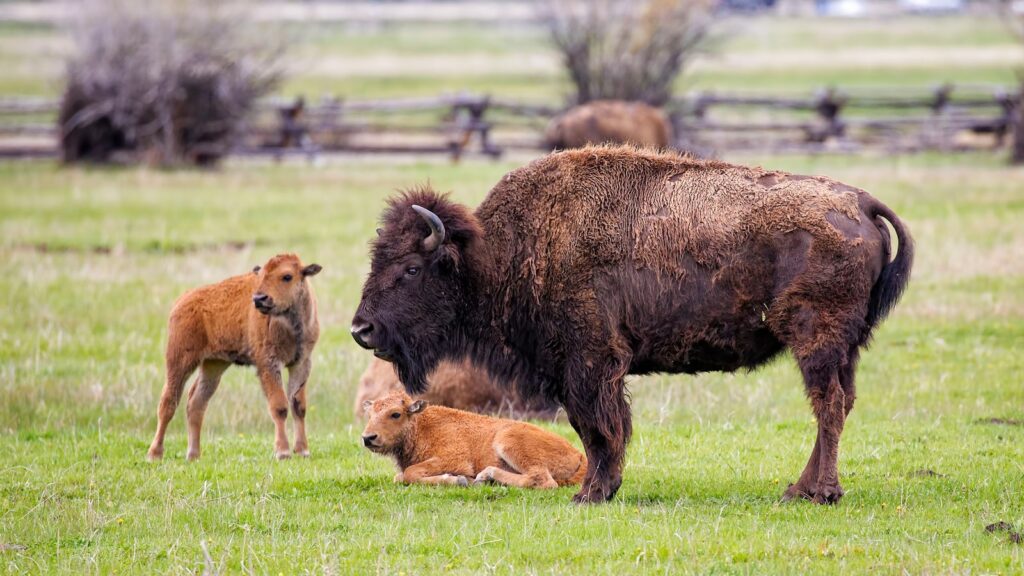
Yellowstone National Park houses America’s largest and most genetically pure public bison herd, with approximately 5,000 animals participating in seasonal migrations. The park’s northern and central herds move between summer and winter ranges, with the Lamar Valley offering exceptional viewing opportunities during spring migrations (April-May) when bison move to higher elevations. During fall (September-October), visitors can observe the reverse journey as herds descend to lower winter grounds, often traveling along established corridors through the Hayden Valley. Rangers recommend visiting at dawn or dusk when bison are most active, with pullouts along the Grand Loop Road providing safe observation points away from traffic.
Theodore Roosevelt National Park’s North Dakota Migration
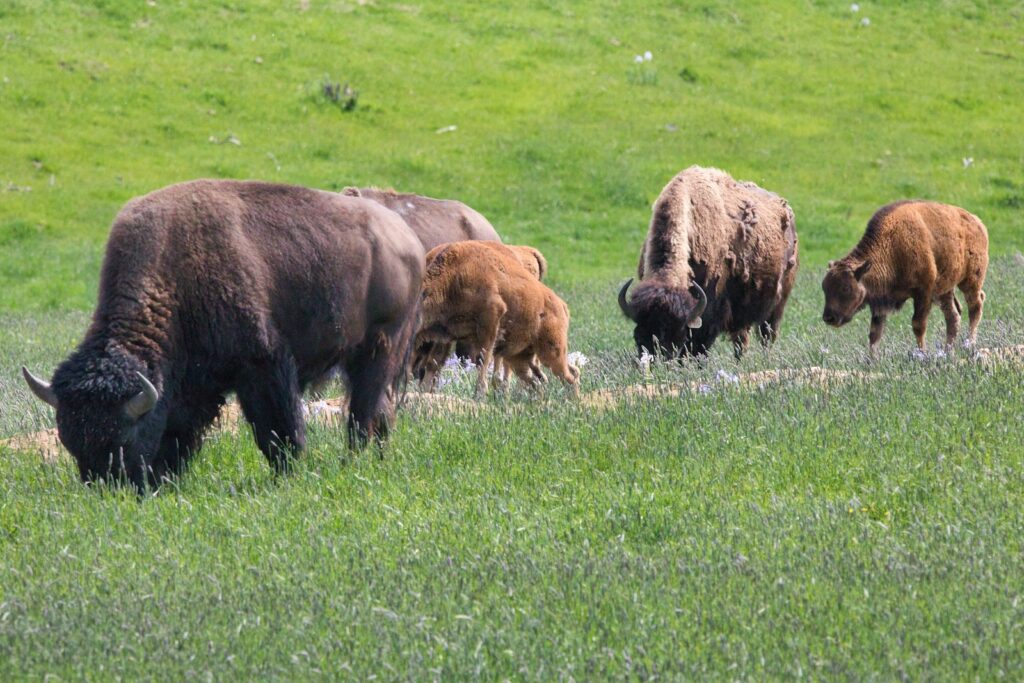
Theodore Roosevelt National Park in western North Dakota maintains a thriving bison population that follows seasonal migration patterns across the park’s rugged badlands landscape. The South Unit, accessible from Medora, offers reliable bison viewing along the 36-mile Scenic Loop Drive, particularly in early morning hours during spring and fall migrations. The park’s North Unit, though less visited, provides more intimate viewing experiences as approximately 200 bison move between winter quarters in sheltered draws to summer upland grazing areas. Wildlife biologists have documented that these bison follow ancient migration routes that have remained unchanged for centuries, making this location particularly significant for observing historically authentic movement patterns.
Wind Cave National Park’s Prairie Passages
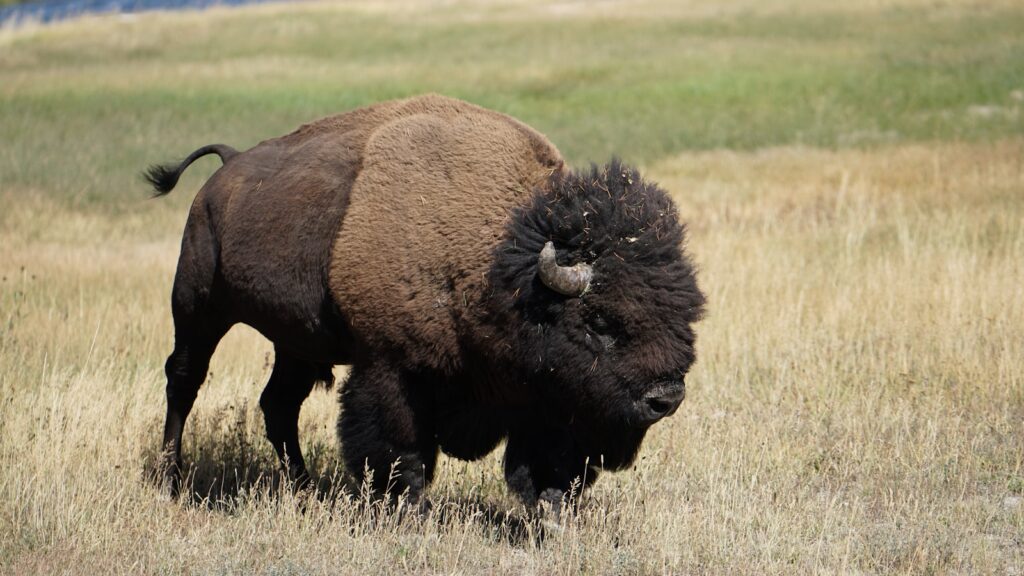
South Dakota’s Wind Cave National Park protects one of America’s most genetically important bison herds as they migrate seasonally across the park’s mixed-grass prairie ecosystem. The herd, numbering approximately 350 animals, makes noticeable movements between the park’s sheltered valleys and exposed highlands depending on forage availability and weather conditions. The best viewing locations include the Rankin Ridge area during spring migrations (April-May) and the park’s northern sections during fall movements (October-November). Park naturalists offer specialized “Bison Behavior” programs during peak migration periods, providing visitors with interpretive information about movement patterns and ecological significance while observing from safe distances.
Badlands National Park’s Dramatic Migration Setting
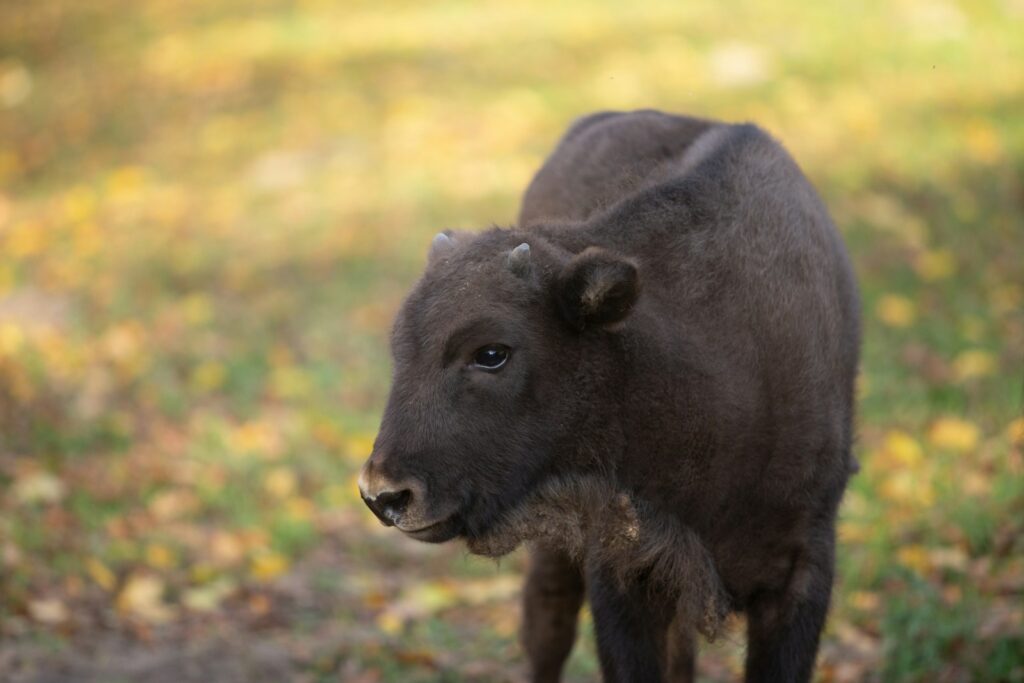
The otherworldly landscape of Badlands National Park in South Dakota creates a spectacular backdrop for observing bison migrations throughout the year. Approximately 1,200 bison move between the park’s Sage Creek Wilderness Area and the central Badlands throughout the seasons, following forage availability. The Sage Creek Rim Road offers exceptional viewing opportunities with minimal crowds, particularly during morning hours when bison frequently cross the prairie in impressive lines. Park biologists have documented increased migration activity during April-May and September-October as the animals respond to changing vegetation patterns. The stunning juxtaposition of ancient brown bison against the striped pink, white and red sedimentary formations creates unforgettable photography opportunities during these seasonal movements.
Custer State Park’s Wildlife Loop Road
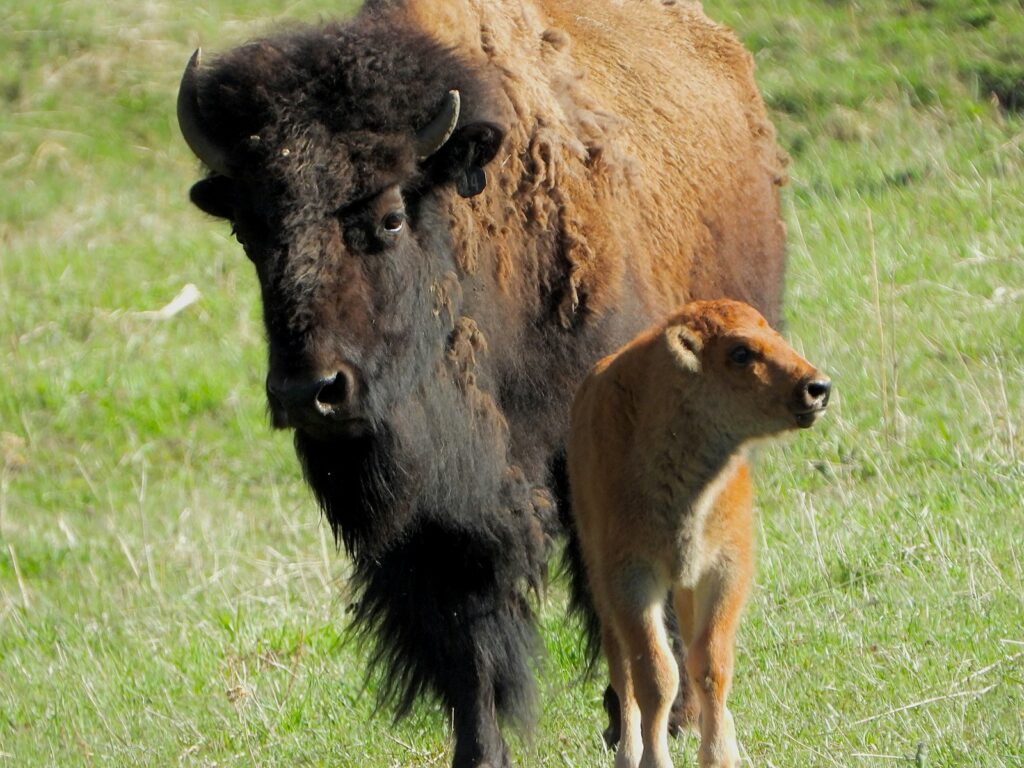
Adjacent to Wind Cave National Park, South Dakota’s Custer State Park manages approximately 1,300 bison that participate in notable seasonal movements throughout the park’s 71,000 acres. The park’s famous Wildlife Loop Road intersects several migration corridors, making it possible to witness impressive bison crossings during spring and fall transitions. Park biologists coordinate an annual bison roundup each September, representing one aspect of modern management that influences migration patterns as the herd is temporarily corralled for health assessments and population control. Visitors should arrive early (before 8 AM) or late (after 5 PM) for optimal viewing chances when bison naturally move between grazing areas and water sources, often traveling in groups of 50-100 animals.
Fort Peck Reservation’s Cultural Migration Experience
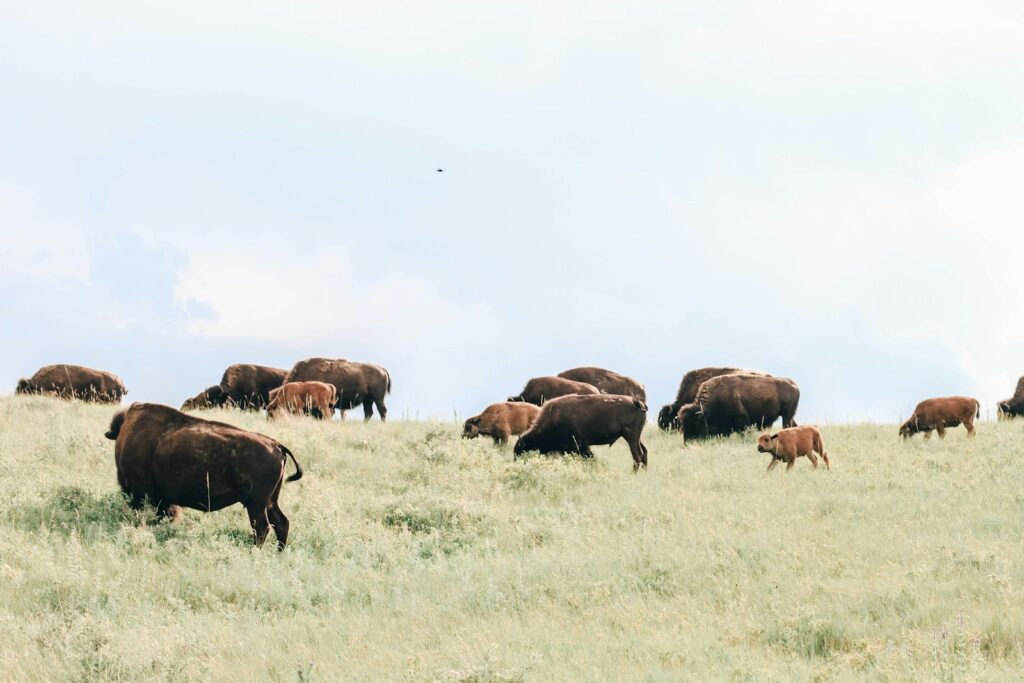
The Fort Peck Reservation in northeastern Montana offers a unique cultural dimension to bison migration viewing, as the Assiniboine and Sioux Tribes manage a culturally significant conservation herd descended from Yellowstone bison. These animals migrate seasonally across tribal lands, with public viewing opportunities available through guided tours arranged through the reservation’s tourism office. The tribal management approach integrates traditional ecological knowledge with modern conservation, creating an educational opportunity to learn about bison’s cultural significance while witnessing their movements. The best viewing window occurs during May through June when calves join the migration and September through October when the herd makes significant movements ahead of winter weather.
Tallgrass Prairie Preserve’s Oklahoma Bison Experience
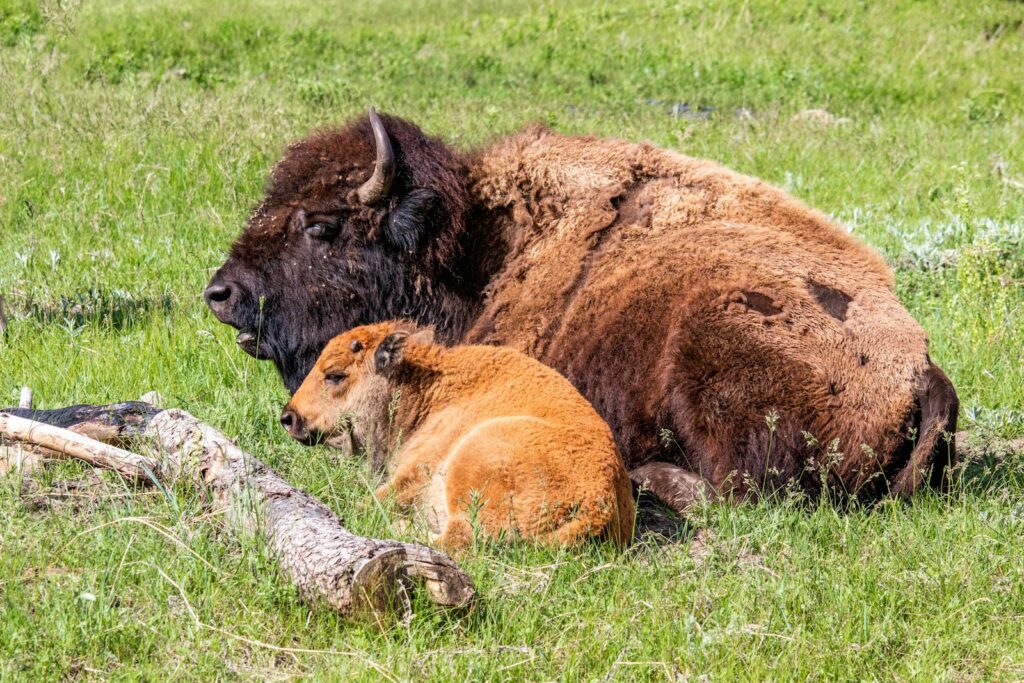
The Nature Conservancy’s Tallgrass Prairie Preserve in Oklahoma maintains the largest protected remnant of tallgrass prairie in the world, home to approximately 2,500 bison that engage in natural migration patterns across 40,000 acres. Unlike more northern herds, these bison don’t make dramatic elevational migrations but instead follow complex rotational grazing patterns that mimic historical movements across the seasonal prairie. The preserve’s driving tour routes intersect several major bison corridors, with spring (April-May) offering excellent opportunities to witness bison traveling with newborn calves. Conservation scientists at the preserve have documented how the herd’s movement patterns help maintain the tallgrass ecosystem through grazing pressure, trampling, and nutrient cycling – ecological processes that visitors can learn about through interpretive programs.
American Prairie Reserve’s Ambitious Restoration
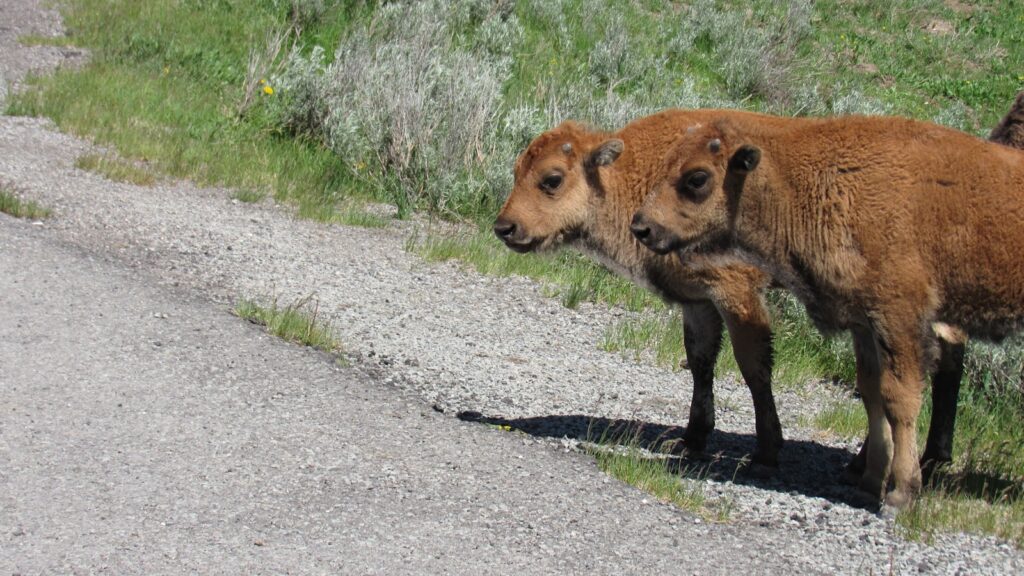
The American Prairie Reserve in central Montana represents one of the most ambitious bison restoration projects in North America, with growing herds beginning to recreate historical migration patterns across connected public and private lands. The reserve’s driving tour routes provide access to several key migration corridors, particularly in the Burnt Lodge and Dry Fork areas where bison move seasonally between riparian zones and upland prairie. Scientists are actively tracking these movements using GPS collars, with data confirming that the reintroduced bison are gradually rediscovering ancient migration routes used by their ancestors. Guided safari tours offered by the reserve provide the most reliable viewing opportunities, with knowledgeable guides who can locate herds during their seasonal movements and explain the ecological significance of these patterns.
Neal Smith National Wildlife Refuge’s Educational Viewing
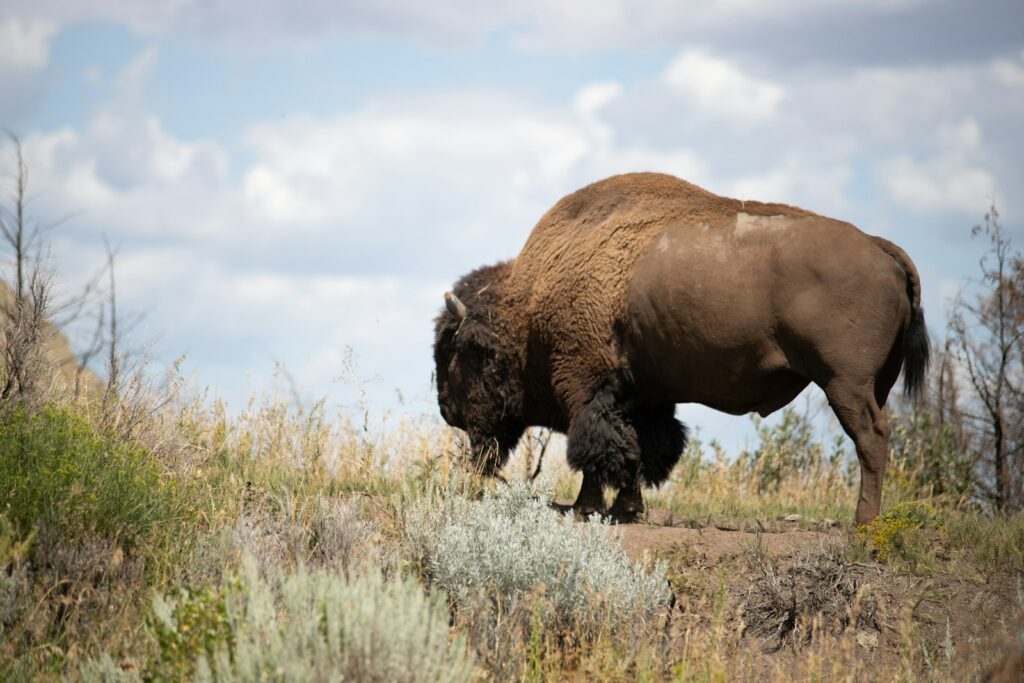
Iowa’s Neal Smith National Wildlife Refuge offers a unique opportunity to witness bison movements in a reconstructed tallgrass prairie environment where seasonal migration patterns are developing within the refuge’s boundaries. Though smaller in scale than western herds, these bison make notable seasonal movements between the refuge’s different prairie management units as vegetation changes throughout the year. The refuge’s Prairie Learning Center provides context for understanding these movements through exhibits explaining how bison migrations historically shaped the tallgrass prairie ecosystem. An auto tour route and the Tallgrass Trail offer excellent viewing locations during spring and fall transition periods when the herd makes its most noticeable movements between different sections of the refuge.
Henry Mountains’ Wild Bison Migrations

Utah’s Henry Mountains host the only truly free-roaming, genetically pure, and legally hunted bison herd in America, with approximately 300-400 animals making significant elevational migrations throughout the year. These movements take the bison from desert lowlands in winter to alpine areas exceeding 11,000 feet during summer months, representing one of the most extreme elevational migrations of any bison population. The Bureau of Land Management maintains primitive roads that provide access to viewing areas, though a high-clearance 4WD vehicle is required to reach the best observation points. Local wildlife officials recommend visiting during May-June transitions when the herd makes its most concentrated upward migration, often traveling along established routes visible from the McMillan Springs area.
Cross Ranch Nature Preserve’s Missouri River Migrations
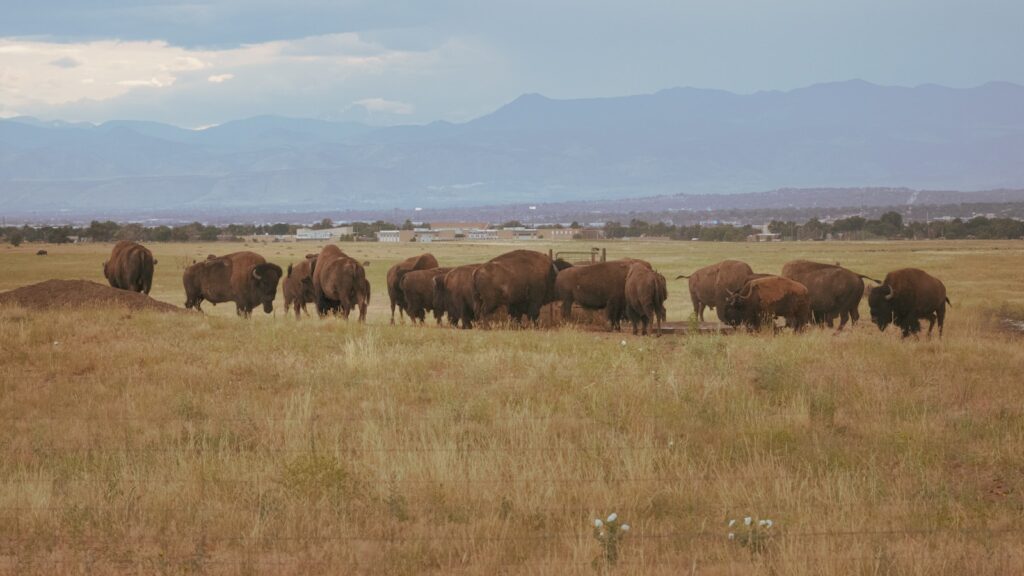
North Dakota’s Cross Ranch Nature Preserve protects one of the last free-flowing sections of the Missouri River, where a conservation bison herd demonstrates seasonal movement patterns between river bottoms and upland prairie. The preserve’s extensive trail system intersects several migration corridors, with the Matah (River) Trail and Prairie Trail offering excellent opportunities to safely observe bison as they travel between habitat types. Nature Conservancy managers have documented increased movement during April-May as bison seek out new spring growth, and again in October-November as they relocate to more sheltered areas before winter. The preserve offers guided bison hikes during peak migration periods, led by naturalists who explain how these modern movements reflect historical patterns that once occurred across the entire Missouri River basin.
Responsible Viewing Practices for Bison Migrations
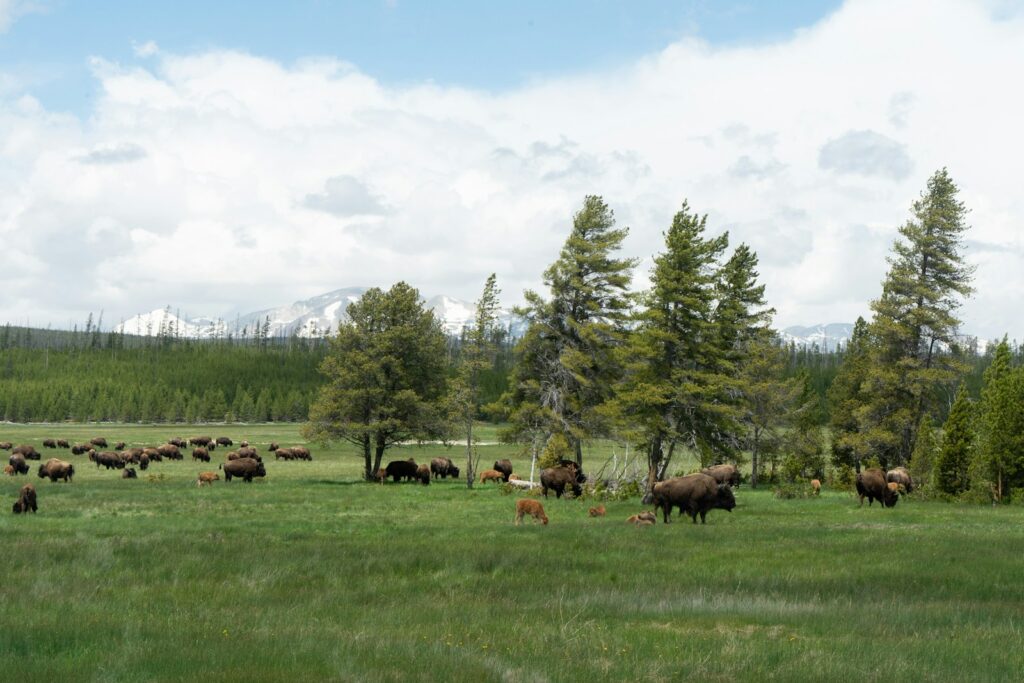
Witnessing bison migration requires adherence to strict safety and ethical guidelines to protect both wildlife and visitors. The National Park Service enforces a minimum viewing distance of 25 yards from individual bison and 100 yards from larger groups, emphasizing that these unpredictable animals can run three times faster than humans. Biologists recommend using spotting scopes or binoculars for close-up observation rather than approaching on foot, as human presence can disrupt natural migration behaviors. Responsible photographers should use telephoto lenses from designated viewing areas rather than attempting to position themselves in migration corridors. Visitors should never block animal movement paths with vehicles, which can stress the animals and potentially endanger both wildlife and other observers in the vicinity.
Witnessing bison migration across the Great Plains connects us to an ancient ecological rhythm that once defined the American landscape. Though greatly diminished from historical numbers, today’s managed herds offer windows into understanding how these massive animals shaped the prairie ecosystem through their seasonal movements. For wildlife enthusiasts willing to visit during optimal seasonal windows and practice responsible viewing behaviors, the experience of watching these magnificent creatures traverse the landscape provides both visual spectacle and deeper appreciation for conservation efforts that have prevented the complete disappearance of this iconic American mammal. As restoration efforts continue across the Great Plains, opportunities to witness bison migration will likely expand, allowing future generations to experience this remarkable natural phenomenon.

